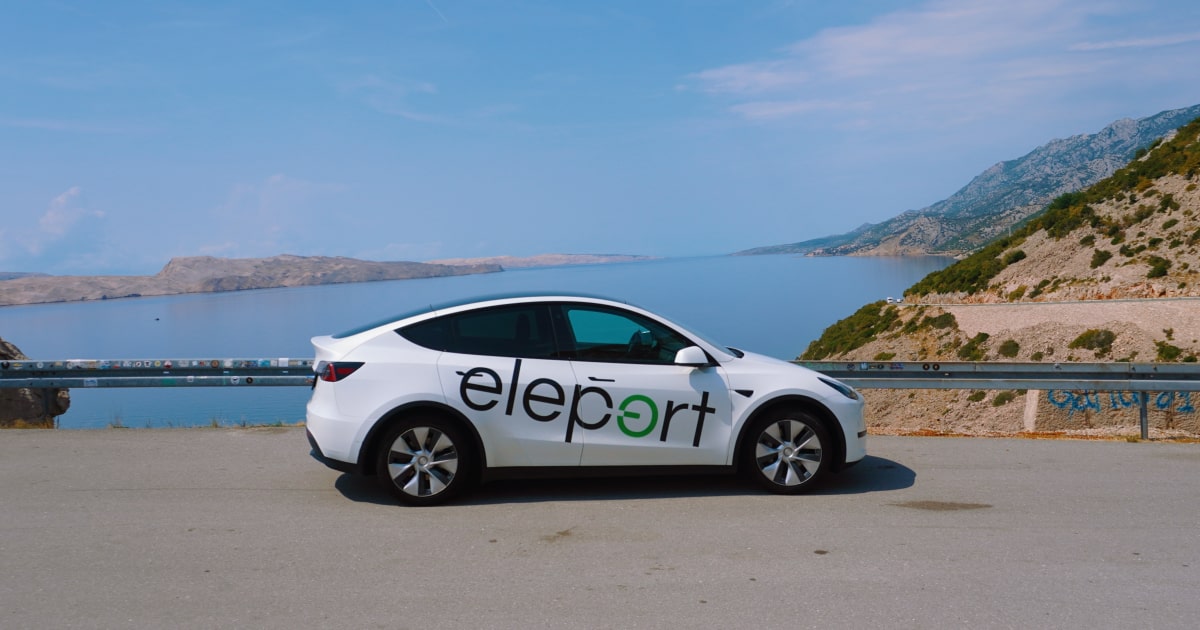Electric vehicles (EVs) are often considered a cornerstone of the transition toward sustainable mobility. An ICCT study from 2025 found that the life-cycle emissions of battery electric cars are nearly 4 times less than gasoline cars.
However, their true environmental value depends on the source of the electricity used. Without clean power behind the plug, the shift from combustion engines to electric drivetrains risks being only a partial solution.
On a fully mixed grid, EVs produce about 73% lower lifetime CO2 emissions than ICE vehicles in Europe across their lifetime. But with a renewable grid powering the EVs, that effect increases to 78% (ICCT 2025). Public charging networks can have a large impact on ensuring the full environmental benefit of EVs is extracted. That’s where Eleport decided to lead by example.

⚡ Start with our electric car charging guide to see how Eleport powers the future of mobility with certified clean energy.
We at Eleport guarantee that all electricity used across our public charging network comes from nothing but renewable sources—consistently, transparently, and across all countries we operate in. This article breaks down how we deliver on that promise, why it matters, and what it means for the future of EV infrastructure in Europe and beyond.
Why Renewable Energy Matters for EV Charging
When we talk about renewable energy for EV charging, we’re referring to electricity produced from naturally replenished sources such as:
- ☀️ Solar Energy – Harvested from photovoltaic systems, ideal for onsite generation and integration at charging hubs.
- 🌬️ Wind Energy – Scalable and consistent, particularly in high-wind European regions.
- 💧 Hydropower – A stable, mature source used with available local hydrological resources.
- 🌱 Biomass & Geothermal – Deployed selectively in markets with sustainable sourcing and infrastructure support.
Using these sources for EV infrastructure decarbonizes the transport sector, reduces air pollution, increases grid resilience, and decreases dependence on centralized power plants and fossil fuel imports.
At Eleport, we go beyond intention. Our entire charging infrastructure operates on a certified clean energy model. Whether it’s a city station powered by rooftop solar or a highway hub backed by wind farms, we give EV drivers a clear answer to the question:
“Where does your electric car’s energy come from?”
With Eleport, the answer is simple: From the sun and the wind – the true energy of tomorrow.
How Eleport Ensures Every Charge Is Clean

Clean energy isn’t a claim. It’s a commitment.
In most European countries, EV chargers are grid-connected. That means they pull electricity from the same national or regional networks that power homes and businesses. The carbon footprint depends on how that electricity is produced.
In Poland, for example, a larger share of the electricity produced still comes from coal, even though renewables are about to overtake it. In Sweden or Norway, it’s nearly all hydro or wind power. Grid-based charging is only as clean as the local energy mix.
Eleport ensures that regardless of the current local energy mix, every single EV charge in our network across Central and Eastern Europe is backed by certified renewable energy, aligned with the grid, and the infrastructure is built for sustainability.
Guarantees of Origin (GOs): The Foundation of Credibility
At the heart of Eleport’s clean energy commitment lies our use of Guarantees of Origin (GOs)—digital certificates that verify every megawatt-hour (MWh) of electricity supplied through our EV charging network comes from renewable sources.
Issued in compliance with EU regulations, each GO includes information about the energy’s origin (whether wind, solar, or hydro), production date, location, and the identity of the generator.
This system provides full traceability and third-party verifiability, which eliminates the risk of greenwashing. When EV drivers charge with Eleport, they can trust that the electricity is accounted for and contractually tied to real renewable generation.
What EV Charging Stations Use Renewable Energy?
Despite rapid EV adoption, few charging networks globally commit to fully renewable sourcing. Eleport is among the few in Europe to operate an infrastructure entirely powered by certified green electricity. Whether in Tallinn, Riga, Warsaw, or Vilnius, or even in our new charging sites in Croatia and Slovenia, every charge is transparently backed by GOs.
We don’t rely on offsets or partial green tariffs. Only direct, verifiable clean power.
What Defines a Renewable Energy EV Charging Depot?
True sustainability means more than just installing chargers. A next-generation charging depot must be part of a larger, intelligent energy ecosystem. The best charging depots include:
- On-site generation via solar rooftops or canopies
- Battery systems that buffer fluctuations and support grid stability
- Smart load management that prioritizes renewable inputs
- Demand-response integration for grid services
- Low-impact design and lifecycle planning
Eleport builds these features into charging sites wherever possible, delivering not just clean charging but also smarter systems overall.
Future Outlook: Scaling to 10,000+ Clean Charging Points

Eleport’s long-term vision is ambitious yet grounded in achievable milestones. By 2030, we are targeting the deployment and operation of over 10,000 DC fast-charging points across Central and Eastern Europe, all powered exclusively by 100% renewable energy. Our roadmap focuses on three high-impact areas:
Retail and Commercial Partnerships
Through strategic collaborations with major retail and commercial partners, such as our ongoing strategic partnership with Carrefour, we are deploying charging infrastructure at high-traffic locations. This model supports destination charging and increased consumer dwell time, creating a win-win scenario for retailers and EV drivers.
Urban Mobility Corridors
We aim to blanket key urban centers and metropolitan regions with dense, accessible charging infrastructure to support the rapid electrification of city transportation. This includes both the private EV owners and EV fleets such as last-mile delivery fleets, taxis, and rideshare services. These urban corridors will be designed with smart load management, ensuring grid resilience even during peak demand.
Eleport is building charging infrastructure exactly where it makes the most sense to plug your EV in, when you need a quick charging stop at a motorway hub, or when you go to the store and could use a top-up charge at the same time.
Final Thoughts
The real question isn’t just “Where do EV chargers get their power?”. It is “Can we trust that the power is truly clean, every time?” At Eleport, the answer is yes. Every charge across our network is backed by certified renewable energy and systems that prioritize sustainability, transparency, and performance.
As the EV market grows and climate targets tighten, clean charging infrastructure must evolve from a nice-to-have to a fundamental requirement. Eleport is built for that future, where clean mobility doesn’t compromise on speed, scale, or trust.



